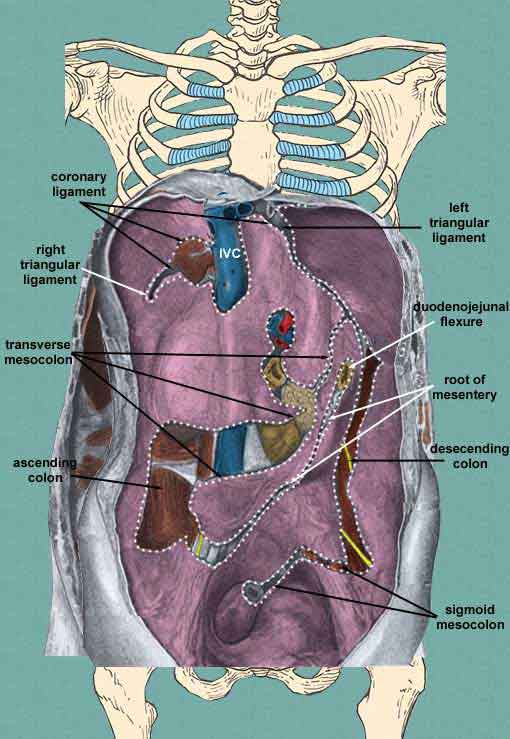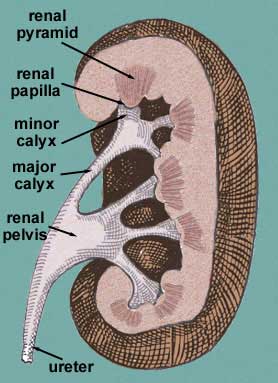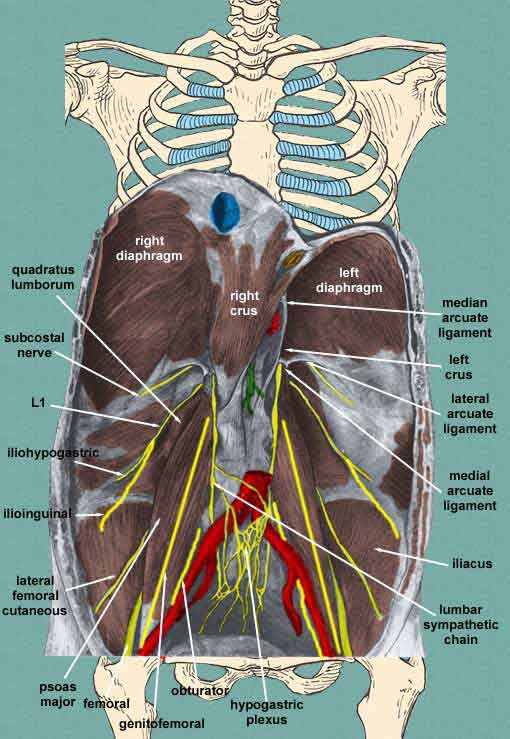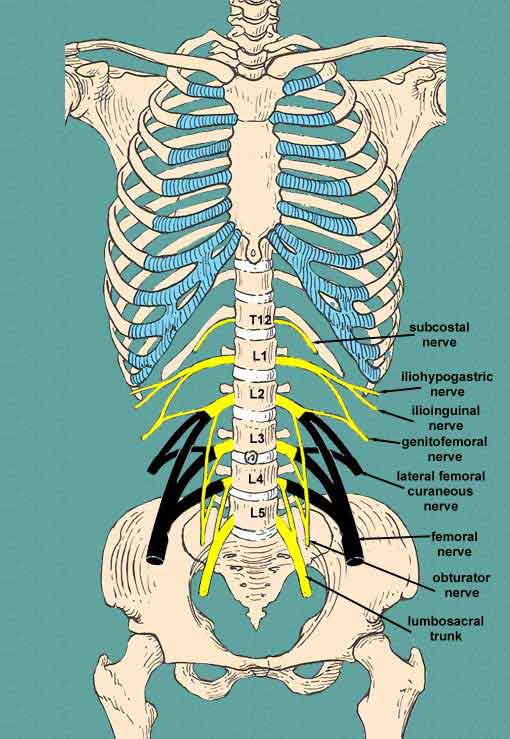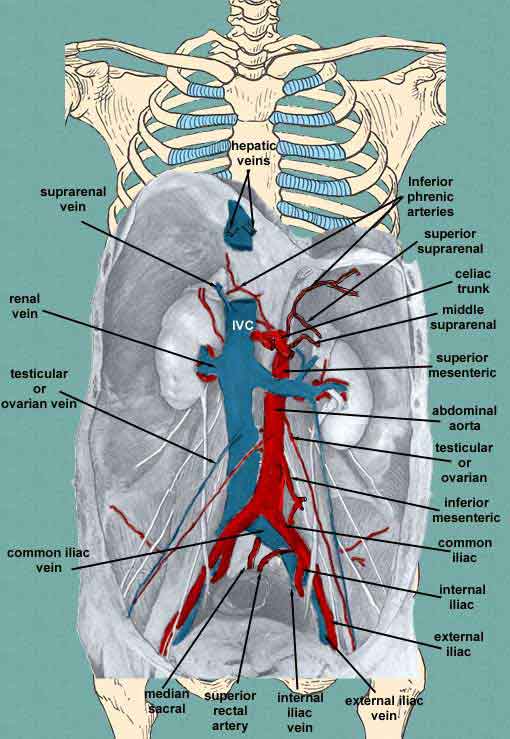It is worth while to take a look at this type of image to appreciate just how the various mesenteries are reflected from the posterior abdominal wall as well as the diaphragm.
Identify the:
- coronary ligament and its triangular parts
- cut edges of the transverse mesocolon
- area where the ascending colon used to be
- cut edges of the sigmoid mesocolon
- space where descending colon used to be
- root of the mesentery
- duodenojejunal flexure
